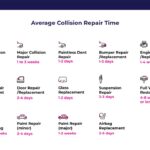For auto repair businesses, creating clear and professional invoices is as crucial as the repair work itself. A well-structured invoice ensures timely payments, builds customer trust, and streamlines your business operations. This guide will walk you through the essential steps of how to invoice an auto repair effectively, ensuring you cover all the necessary details and maintain a professional image.
Essential Elements of an Auto Repair Invoice
A comprehensive auto repair invoice should clearly outline the services provided and their associated costs. Here are the key components to include:
Customer Information
Start with the basics: your customer’s details. This should include:
- Name: Full name of the customer.
- Address: Complete billing address.
- Contact Number: Phone number for any queries.
- Email Address (Optional): For sending digital invoices.
Having accurate customer information helps in record-keeping and ensures the invoice reaches the right person.
Vehicle Details
Clearly identify the vehicle that received the repair service. This section should contain:
- Vehicle Identification Number (VIN): Essential for accurate vehicle identification and history.
- Make: Manufacturer of the vehicle (e.g., Toyota, Ford).
- Model: Specific model of the vehicle (e.g., Camry, F-150).
- Year: Year of manufacture.
- License Plate Number: State and license plate number.
- Mileage (at service intake): Odometer reading when the vehicle was brought in.
Alt: Auto repair shop locator webpage showcasing search functionality for finding licensed mechanics.
Accurate vehicle details prevent confusion and ensure that the invoice is clearly linked to the specific car that was serviced.
Service/Repair Description
This is the most critical part of your invoice. Detail every service and repair performed. Be specific and use clear, understandable language. Avoid jargon where possible, or explain technical terms if necessary.
- Labor Charges: List each labor operation separately. For example:
- Engine Diagnostic – 2 hours @ $[Hourly Rate]
- Brake Pad Replacement (Front) – 1.5 hours @ $[Hourly Rate]
- Parts: Itemize all parts used for the repair. Include:
- Part Name and Description (e.g., “Brake Pads – Front, Premium Ceramic”)
- Part Number (if applicable)
- Quantity
- Unit Price
- Total Price for each part
Clearly separating labor and parts costs provides transparency and helps customers understand where their money is being spent.
Costs Breakdown
Provide a clear breakdown of all costs to avoid any ambiguity. This section should include:
- Subtotal for Labor: Total cost of all labor services.
- Subtotal for Parts: Total cost of all parts.
- Subtotal Before Tax: Sum of labor and parts subtotals.
- Tax (if applicable): Clearly state the tax rate and the amount.
- Discounts (if any): If any discounts were applied, mention them clearly and the reason (e.g., “Loyalty Discount,” “Coupon Code”).
- Total Amount Due: The final amount the customer needs to pay.
Total Amount Due and Payment Terms
Clearly state the total amount due in a prominent place on the invoice. Also, specify your payment terms:
- Payment Methods Accepted: List all accepted payment methods (Cash, Credit Card, Debit Card, Checks, Online Payment, etc.).
- Due Date: Specify when the payment is expected. Terms like “Due upon receipt” or “Net 30” should be clearly mentioned.
Shop Information & Contact Details
Your invoice is also a representation of your business. Include your shop’s information:
- Shop Name: Official name of your auto repair business.
- Address: Physical address of your shop.
- Phone Number: Shop contact number.
- Email Address: Business email address.
- Website (Optional): If you have a website, include the URL.
- License Number (if applicable): Include your Automotive Repair Dealer license number as required by law in many regions.
This information adds legitimacy to your invoice and makes it easy for customers to contact you if needed.
Best Practices for Auto Repair Invoicing
Beyond the essential elements, adopting best practices can further enhance your invoicing process:
Clarity and Transparency
Ensure your invoice is easy to read and understand. Use clear language, avoid technical jargon where possible, and be transparent about all charges. Customers appreciate knowing exactly what they are paying for.
Professional Formatting
A well-formatted invoice reflects professionalism. Use a clean and organized template. Your invoice should include:
- Invoice Number: Unique sequential number for easy tracking.
- Invoice Date: Date the invoice was issued.
- Company Logo (Optional): Adding your logo can enhance branding.
Itemization is Key
Always itemize labor and parts. Avoid lump sum billing as it lacks transparency and can lead to customer disputes. Detailed itemization builds trust and justifies the charges.
Consider Using Invoicing Software
For efficiency and accuracy, consider using invoicing software designed for auto repair shops. These tools often offer features like:
- Pre-built templates: Save time on formatting.
- Parts and labor databases: Quickly add items and pricing.
- Integration with accounting software: Streamline financial management.
- Digital invoicing and payment options: Modernize your process and offer convenience to customers.
By following these guidelines on how to invoice an auto repair, you can create professional, clear, and accurate invoices that contribute to customer satisfaction and efficient business operations. Remember, a well-crafted invoice is a vital part of the customer experience and reflects the quality of your auto repair services.


